Yeast Overgrowth Syndrome
What is Candidiasis?
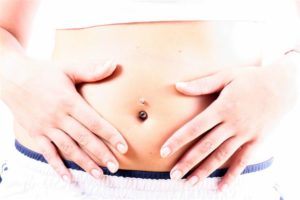 Candida albicans is a particular form of yeast (fungus) that can be found living in the intestinal tracts of most individuals. Yeasts co-habitate in a symbiotic relationship with over 400 healthy intestinal bacteria. These healthy bacteria help produce short-chain fatty acids, vitamins K, biotin, B12, thiamin, and riboflavin. The bacteria also keep the unhealthy yeast that inhabits our intestinal tract, in check. When these good bacteria (probiotics) die (from antibiotics) or are suppressed (by prescription steroids), the yeasts are allowed to grow to unhealthy levels, causing dysbiosis (disruption of the healthy intestinal environment). Once there are too many yeasts, not enough good bacteria to keep them in check, symptoms of overgrowth may be seen.
Candida albicans is a particular form of yeast (fungus) that can be found living in the intestinal tracts of most individuals. Yeasts co-habitate in a symbiotic relationship with over 400 healthy intestinal bacteria. These healthy bacteria help produce short-chain fatty acids, vitamins K, biotin, B12, thiamin, and riboflavin. The bacteria also keep the unhealthy yeast that inhabits our intestinal tract, in check. When these good bacteria (probiotics) die (from antibiotics) or are suppressed (by prescription steroids), the yeasts are allowed to grow to unhealthy levels, causing dysbiosis (disruption of the healthy intestinal environment). Once there are too many yeasts, not enough good bacteria to keep them in check, symptoms of overgrowth may be seen.
Signs and Symptoms associated with yeast overgrowth
Candidiasis commonly infects the ears, nose, and the urinary and intestinal tracts.
Symptoms associated with yeast overgrowth include:
Constipation, diarrhea, irritable bowel syndrome, abdominal pain, bloating, gas and indigestion, rash, bladder spasms and infections, ear infections, sinus infections, rectal itching, itchy ears or nose, sugar or starch cravings, white tongue (thrush), toe or finger nail infections, jock itch, chronic vaginal yeast infections, intestinal permeability, increased body odor, PMS, asthma, depression, chronic fatigue, headaches, boy aches, and low moods.
Candida years overgrowth can cause all sorts of health problems and the symptoms are often attributed to other health problems that don’t exist. An example is heart burn or GERD, where the patient has a lot of abdominal pain, gas, bloating, and discomfort-It is easier to place a patient on a proton pump inhibitor or antacid drug than to investigate, find, treat and correct the cause-yeast overgrowth.
Like most opportunistic infections, Candida and other yeasts may increase during times of stress. This is a common complaint in my fibro and CFS patients, since acute or chronic stress is the catalyst for their illness in the first place.
This overgrowth, too many yeasts in the intestinal tract, leaks toxins into the bloodstream or other tissues, allowing antigens (foreign invaders) to set up residence in various bodily tissues. Antigens then trigger complex allergic reactions. This might explain why most individuals with chronic yeast overgrowth develop food, inhalant, and environmental allergies. But also explains why patients with yeast overgrowth have achy diffuse, joint and muscle pain.
 Allergic reactions can manifest in a variety of symptoms: fatigue, brain fog, depression, joint and muscle pain, digestive disorders, headache, rash, and breathing problems. Inflammation of the nose, throat, ears, bladder, and intestinal tract, can lead to infections of the sinus, respiratory, ear, bladder and intestinal membranes. In an attempt to arrest these infections, doctors might prescribe a broad spectrum antibiotic. Such antibiotics promote yeast overgrowth and often times, additional symptoms.
Allergic reactions can manifest in a variety of symptoms: fatigue, brain fog, depression, joint and muscle pain, digestive disorders, headache, rash, and breathing problems. Inflammation of the nose, throat, ears, bladder, and intestinal tract, can lead to infections of the sinus, respiratory, ear, bladder and intestinal membranes. In an attempt to arrest these infections, doctors might prescribe a broad spectrum antibiotic. Such antibiotics promote yeast overgrowth and often times, additional symptoms.
Common sites of infection are the mouth (Thrush), gastrointestinal tract, vagina, urinary tract, prostate gland and skin and fingernails and toenails.
The yeast overgrowth may cripple the immune system. Candida colonization of the GI tract reduces mucosal defense against gram-negative bacteria making the patient at risk for future bugs (pathogens), flu, colds, and other viruses as well as bacterial infections.
When the yeast invade or attach to the intestinal wall, intestinal permeability (particles leak into the rest of body), can occur-toxins from microorganisms and protein molecules from your food enter the blood stream.
The toxins are then recognized by antibodies as a foreign antigen (something that needs to be attacked and fought off). Because proteins are derived from common DNA (gene molecule) structure, each time a new protein enters directly into the bloodstream, it, too, can become recognized as a foreign invader. This creates an ongoing allergic cascade of chemical reactions leading to food allergies.
Intestinal permeability or “leaky gut,” is caused by damage to the intestinal mucosa. It occurs when the lining of the digestive tract becomes permeable and leaks undigested food products and toxins that may cause chronic inflammation.
NSAIDs are the Primary Cause of Intestinal Permeability
Non-steroidal anti-inflammatory medications include Advil, Bextra, Celebrex, Vioxx, Mobic, Naprosyn, and others. These medications can cause intestinal inflammation and mucosal cell erosion. This then leads to intestinal permeability.
According the FDA, over 200,000 people develop serious gastric bleeding and 10,000-20,000 people die every year from NSAIDs.*
*Drs. Peter M. Brooks and Richard O. Day, New England Journal of Medicine, 1991; 324(24):1716-25
Intestinal permeability is associated with such illnesses as:
 Ankylosing spondylitis, Rheumatoid arthritis, Food allergies, Crohn’s disease, Eczema, Chronic fatigue, Irritable bowel syndrome,Cystic fibrosis, Chronic hepatitis, Autoimmune diseases.
Ankylosing spondylitis, Rheumatoid arthritis, Food allergies, Crohn’s disease, Eczema, Chronic fatigue, Irritable bowel syndrome,Cystic fibrosis, Chronic hepatitis, Autoimmune diseases.
Intestinal permeability allows antigens (foreign chemicals) to leak out of the digestive tract and into the bloodstream. This triggers an autoimmune reaction, where the body attacks itself, and can create pain and inflammation in any of the body’s tissues. Let’s say someone with intestinal permeability eats a chicken sandwich. The chicken proteins might not be properly broken down and digested. Instead they leak across the intestinal membranes and go directly, unprocessed, into the bloodstream. Well, the body is not designed to have unprocessed chicken proteins racing around in the bloodstream and it thinks it’s being invaded by foreign chicken molecules. The immune system kicks in, and in accordance with an allergic reaction, releases chemicals to destroy and eliminate these renegade chicken bits. Pain and inflammation can occur anywhere these unprocessed proteins are deposited, including muscles, joints, and organs.
Studies show that most individuals with CFS are plagued with intestinal permeability. (Rigden S Entero-hepatic resuscitation program for CFIDS. CFIDS Chron 1995; Spring: 46-49)
A treatment program for patients with CFS that reduced allergic foods and used nutritional supplements to increase liver detoxification pathways (phase I and Phase II) yielded an 81.2% reduction in symptoms. (Rigden S Entero-hepatic resuscitation program for CFIDS. CFIDS Chron 1995; Spring: 46-49)
Could Yeast Overgrowth make you feel fuzzy headed?
Yeast, remember, feeds on sugars and carbohydrates that easily convert to sugars. In turn, yeasts produce a series of chemical products as waste and among those are acetaldehyde and ethanol.
Ethanol is alcohol, and there are cases of people on record who have never drunk a drop of alcohol yet are daily inebriated. Acetaldehyde is produced as the alcohol breaks down and is about six times more toxic to brain tissue than ethanol. These two chemicals are probably responsible for the following effects, according to Dr. Orian Truss:
- Cell membrane defects, damage to red and white blood cells and other problems.
- Enzyme destruction. Enzymes are the key to breaking down foods in the body so that they can be utilized as nourishment.
- Abnormal hormone response. Hormones regulate your bodily functions.
Some of the symptoms caused by Candida albicans are these:
- Allergic reactions.
- Gastrointestinal problems: bloating and gas, diarrhea, abdominal pain, gastritis, gastric ulcers, constipation, and many others.
- Respiratory system: sore throat, sore mouth, contribution to sinus infections, bronchial infections and pneumonia.
- Cardiovascular system. palpitations, rapid pulse rate, pounding heart.
 Genitourinary system: vaginitis, frequent urination, lack of bladder control, itchy rashes, etc.
Genitourinary system: vaginitis, frequent urination, lack of bladder control, itchy rashes, etc.- Musculoskeletal system: muscle weakness, leg pains, muscle stiffness, slow coordination, and so on.
- Central Nervous system: Headaches, poor brain function, poor short-term memory, fuzzy thinking and so on.
- Fatigue is extremely common as impaired metabolism doesn’t enable the body to get enough fuel and impaired enzyme functioning inhibits energy production.
- Weight gain is common.
What causes yeast overgrowth?
Birth control pills, food allergies, antibiotics and corticosteroid therapy are initiators of yeast overgrowth.
A minor increase in intestinal yeast is usually not a problem, leading possibly to infection of the mouth (thrush) or vaginal lining (vaginitis or “a yeast infection”). The body’s immune defenses are usually strong enough to keep the yeast from taking over the intestinal tract.
However, if yeast overgrowth is left unchallenged, more sinister symptoms appear. Yeasts can change into an invasive mycellial fungus with rhizoids (tentacle-like projections) that penetrate the lining of the intestinal tract.
These projections can cause intestinal permeability and leak toxins across the cellular membranes. Penetration by these rhizoids and the resulting intestinal permeability cause a disruption in the absorption of nutrients and finally nutritional deficiencies. Deficient nutrients lead to reduced immunity and further weakening of the body’s defense systems. This can lead to fatigue, allergies, decreased immunity, chemical sensitivities, depression, poor memory, and digestive complaints.
Your resistance to yeast overgrowth may be compromised by allergic reactions, more antibiotics, stress, fatigue, and poor nutrition. This sets the stage for environmental sensitivities. As the liver and adrenal glands become chronically overwhelmed, tolerance to the fumes of certain environmental chemicals is reduced: gasoline, diesel, other petrochemicals, formaldehyde, perfumes, cleaning fluids, insecticides, tobacco, pesticides, household cleaners, etc.
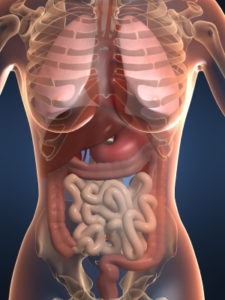 The Liver
The Liver
The liver is the largest organ in the body. Located on the right side of the abdomen, it is the first to process the nutrients delivered by the bloodstream. It filters two quarts of blood every minute, removing about 99% of all unwanted toxins and bacteria. The liver also secretes a quart of bile each day. Bile is necessary for absorbing fat-soluble substances, including certain vitamins. It helps eliminate toxic chemicals and is mixed with dietary fiber and voided through daily bowel movements.
We are constantly exposed to potentially dangerous toxins through the food we eat, the air we breathe, and the water we drink. An optimally functioning detoxification system is necessary for providing good health and preventing disease. Many diseases, including cancer, rheumatoid arthritis, lupus, Alzheimer’s, Parkinson’s, and other chronic age-related conditions are linked to a weakened detoxification system. It can also contribute to allergic disorders, asthma, hives, psoriasis, and eczema and is associated with CFS, FMS, depression, and systemic Candidiasis.
Help yourself get healthy
- Explore alternatives to long-term prescription drugs like nonsteroidal anti-inflammatory meds (Bextra, Celebrex, Vioxx, Mobic, etc.) benzodiazepines (Xanax, Klonopin, Ativan, etc) and statins (Lipitor, Zocor, Crestor, etc).
- Severely reduce or eliminate alcohol, nicotine, allergic foods, food additives, and preservative rich foods.
- Enjoy foods from the Brassica family: broccoli, cabbage and Brussels sprouts. They contain phytochemicals that help the liver eliminate toxic chemicals.
- Supplement with silybum marianum (milk thistle). The silymarin complex, particularly the silibinin component of milk thistle, protects the liver from free-radical damage. It prevents certain toxins from entering liver cells and stimulates regeneration of damaged liver cells.
Medical use of milk thistle can be traced back more than 2000 years. Over 30 years ago, intensive research on the liver-protecting properties of milk thistle began in Germany.
Extensive research also may have led to the approval of a standardized milk thistle extract in Germany for the treatment of alcohol-induced liver disease and other diseases of the liver.
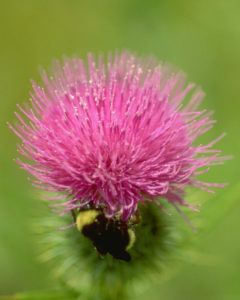 Milk thistle extract protects liver cells, both directly and indirectly. It is able to regenerate liver cells that have been injured, prevent fibrosis or fatty liver, bind to the outside of cells and block entrance of certain toxins, and even neutralize toxins that have already penetrated the liver.
Milk thistle extract protects liver cells, both directly and indirectly. It is able to regenerate liver cells that have been injured, prevent fibrosis or fatty liver, bind to the outside of cells and block entrance of certain toxins, and even neutralize toxins that have already penetrated the liver.
Silymarin may also prevent the damage caused by certain drugs such as acetaminophen, antidepressants, and antipsychotic, cholesterol lowering, and anticonvulsive drugs.
Milk thistle may someday be the main treatment for hepatitis, a chronic viral infection of the liver that can lead to liver damage and, in some cases, liver failure. During a six-month treatment period in patients with chronic alcohol hepatitis, liver function test results normalized and liver enzymes improved over controls using placebo.
• Supplement with alpha lipoic acid (ALA). This powerful antioxidant compound helps recycle glutathione. It is both fat and water soluble, so it works in both mediums.
This allows ALA to get past the blood brain barrier and remove potentially toxic chemicals from the brain. Manufactured by the body in small amounts, it needs to be also obtained through the diet. It can help prevent and repair damage to liver cells and is being studied for its regenerative properties in neurological diseases including Alzheimer’s, multiple sclerosis, Lou Gehrig’s disease, and Parkinson’s disease. To increase liver detoxification and boost cellular energy, take between 200–400 mg. of ALA daily.
Treating Yeast Overgrowth
Step 1: Eliminate yeast promoting foods. A number of dietary factors appear to promote the overgrowth of Candida. Eliminate all the foods below for three months.
Yeast Overgrowth 3 Month Diet
- Sugar is the chief nutrient for Candida albicans, so restricted sugar intake is absolutely necessity to effectively treat chronic Candidiasis.
- Avoid refined sugar, honey, maple syrup, fruit juice, milk, white potatoes, corn, beans, processed or bleached (white) flour, bakery goods, muffins, cereals, and anything containing sugar. Ice cream, cake, cookies, and other sweets should be avoided for at least three months.
- No potato or corn chips, pretzels, or crackers.
- No dried fruits – including raisins.
- Fruits should also be avoided, along with fruit juice (except the fruit juice taken with 5HTP – if that has been prescribed for you).
After the initial two weeks, try introducing apples and pears to see if you have any reactions. (Reactions might include fatigue, depression, aches and pain, rectal itching, itching of the ears or nose, and digestive disturbances.) If not, then try berries: strawberries, blueberries, blackberries, and raspberries. Avoid all other fruits.
- Alcoholic beverages should be avoided, as should malted-milk or other malted products.
- Mold – and yeast-containing foods are best avoided for two–three months. These include peanuts, dried fruits (including prunes, raisins, and dates), vinegar, pickled vegetables, sauerkraut, relishes, green olives, vinegar-containing salad dressings, catsup, mayonnaise and, pickles.
- No milk or dairy products. All natural (unsweetened) yogurt is allowed.
- Most vitamin and mineral supplements purchased at a drug store are contaminated with yeast. Follow your doctors recommendations about which supplements are acceptable.
Candida Diet: What you Can Eat
All Vegetables – Artichokes, Asparagus, Beets, Brussels sprouts, Cabbage, Carrots, Cauliflower, Chicory, Collards, Egg Plant,Green Beans, Green Peas, Mustard Greens, Okra, String Beans, Turnip Greens, Lettuces, Alfalfa Sprouts, Bamboo Shoots,Broccoli, Cabbage, Cauliflower, Celery, Chives, Dandelion, Endive, Fennel, Kale, Kelp, Leeks, Lettuce, Mung Bean Sprouts,Parsley, Peppers, Rhubarb, Spinach, Squash, Swiss Chard, Water Cress, Fresh tomatoes and onions are also allowed, along with summer squash and zucchini – all types of squash.
Meats and Proteins (All Lean Cuts)
Beef, Chicken, Clams, Crab, Eggs, Ham, Lobster, Salmon, Shrimp, Tuna, Turkey, Veal, Also all game birds and animals such as squirrel, rabbit, quail, duck, goose, and venison are allowed.
Nuts and Seeds – In limited amounts (one ounce) — Walnuts, cashews, almonds, sunflower seeds and pumpkin Seeds.
Use cold pressed non-hydrogenated oils
Use only cold pressed or expeller pressed or non-hydrogenated oils (olive or canola oils). Also, you should take one tablespoon of virgin olive oil each day on your salads or vegetables. You can add lemon juice to this if you so desire. The best salad dressing is virgin olive oil in lemon juice.
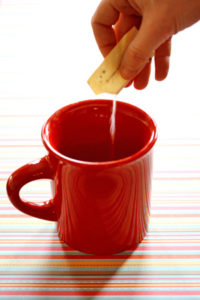 Other Items – Butter is fine, avoid margarine. You may have one cup of oatmeal (the old fashioned kind) per day. Sweet and Low is ok.
Other Items – Butter is fine, avoid margarine. You may have one cup of oatmeal (the old fashioned kind) per day. Sweet and Low is ok.
Natural plant based sweeteners like stevia or FOS are best.
Fructo-oligosaccharide (FOS) is a short-chain polysaccharide used in Japan for dozens of years. It isn’t digested by humans but does stimulate the growth of good bacteria within the intestinal tract. It also helps with liver detoxification, lowers cholesterol, and eliminates various toxins. It can be used as a natural sweetener.
Stevia is remarkable (no calories, no carbs) herb, native to Paraguay. It has been used as a sweetener and flavor enhancer for centuries. It doesn’t promote the growth of yeast and can be used as a natural sweetener in food and beverages.
Make sure you’re taking yeast-free products. All of the protects I recommend to my patients, including the Essential Therapeutics CFS/Fibromyalgia formula, 5HTP, adrenal cortex, etc. are yeast free.
Step 2: Improve digestion.
Gastric hydrochloric acid and pancreatic enzymes help keep Candida from overgrowing in the small intestine.
- Supplement with pancreatic enzymes with each meal.
- Supplement with betaine hydrochloric acid with each meal. Yeast can’t live in an acidic environment.
Step 3: Replace good bacteria
such as Lactobacillus acidophilus, L. bulgaricus, L. catnaforme, L. fermentum, and Bifidobacteria bifida. These normally inhabit vaginal and gastrointestinal tracts; help digest, absorb, and produce certain nutrients; and keep potentially harmful bacteria and yeast in check.
Use probiotics twelve hours after taking antibiotics.
L. acidophilus has proven to be effective in treating irritable bowel syndrome, H. pylori, diarrhea, and colitis. And it’s especially helpful in treating yeast overgrowth.
Yogurt contains certain strains of good bacteria, but it isn’t standardized for a particular amount. Also, most yogurts are made from L. bulgaricus or Streptococcus thermophilus. Both are friendly bacteria, but neither will help colonize the colon. So it’s best to use live organisms that are shipped on ice and then kept refrigerated until purchase. Live L. acidophilus and B. bifidum powders or capsules are preferred.
• Supplement with probiotics for three months: 5–10 billion organisms on an empty stomach each day. Some extremely resistant yeast infections may need continuous probiotic replacement therapy.
Step 4:
• Always take milk thistle and or alpha lipoic acid when taking antifungal medication (including natural anti-yeast supplements).
This helps reduce liver toxicity.
Use natural remedies either by themselves or in combination with prescription medications. Patients should use a natural remedy or prescription antifungal medication for at least three months.
Difficult cases of yeast overgrowth will require a longer treatment of six months or more.
I use a product called a yeast formula with the following ingredients:
Yeast Formula
Calcium undecylenate 150mg (see below).
Sorbic acid 50mg is a potent anti-yeast nutrient.
Beberine Sulfate 200mg (see below).
Indian Barberry (Berberis aristata) min. of 6% berberine 50mg (see below).
Chinese Goldenthread, min 20% berberine 25mg is a broad spectrum anti-yeast supplement.
Green Tea leaf, min 80% 50mg is a potent anti-oxidant.
Undecylenic acid is one of the most powerful anti-yeast medications available. I have patients take one tablet a day and slowly increase up to 3 tablets a day with food. This concentrated, broad-spectrum formula combines specific natural agents useful in supporting a healthy balance of intestinal micro flora, thus discouraging the overgrowth of yeast. Sustained release and ph balanced, this potent formula is readily absorbed into the small and large intestine.
Berberine or Barberry has a wide range of antimicrobial properties. It is a proven herbal medicine used successfully to treat fungal, bacterial, and parasitic infections.
Other Natural Antifungal Medications
• Caprylic acid is a naturally occurring fatty acid and a potent antifungal medicine. It should be taken as an enteric-coated timed-release capsule. Dosage is 500–1,000 mg. three times daily with food.
The Caprylic Acid is fungicidal for Candida albicans. It is harmless to friendly intestinal flora, and effective against the invasive mycelial form as well as the yeast form, because it is absorbed by the intestinal mucosal cells. Caprylic Acid is metabolized by the liver and does not get into the general circulation. It must exert its fungicidal effect in the intestinal tract or not at all. According to studies, just ten minutes after oral intake of straight Caprylic acid, more than 90% can be traced in the portal vein on its way to the liver. Consequently, Caprylic acid should be taken with psyllium powder which will form a gel in the intestinal tract and release the Caprylic acid trapped within over a period of time.
• Psyllium gradually scrapes away Candida albicans’ breeding ground (fecal encrustations) from the colon wall, absorbs toxins within the colon and carries them out, reduces toxic overload (“die-off reaction”) from poisons released by dying Candida during treatment. Because psyllium is not absorbed itself, toxic wastes are carried out in the feces.
Available at most health food stores.
• Garlic has been used for medicinal purposes for centuries. It is an effective treatment for the overgrowth of Candida albicans and other yeasts. It has shown to be more potent than Nystatin for Candida albicans. Dosage of standardized garlic (1.3% alliin) is 600–900 mg. two–three times daily with food.
Available at most health food stores.
• Citrus seed extract is a broad spectrum antimicrobial used to successfully treat yeast and bacterial parasites. Dosage is 100–200 mg. twice daily after meals.
Available at most health food stores.
Step 6: Make sure you treat yourself for intestinal permeability.
Yeast overgrowth can cause intestinal permeability and contribute to food sensitivities or allergies. Treat concomitantly.
Treating Intestinal Permeability and Malabsorption Syndrome
Those who have (or suspect) malabsorption syndrome, intestinal permeability, or irritable bowel syndrome should take the following steps:
• Start supplementing digestive enzymes, including hydrochloric acid.
• Supplement with probiotics- acidophilus, bifidobacteria, and lactobacilli.
Probiotic Formula available here
• Supplement with at least 2,000 mg. of L-glutamine a day (on an empty stomach).
Increase your fiber intake.
Use N-Acetyl-D-Glucosamine to repair intestinal mucosal cells and prevent reoccurrence of intestinal permeability.
Leaky Gut Formula
I use a product especially developed for intestinal permeability known called Leaky Gut Formula. It has all the essential nutrients NEEDED TO CORRECT INTESTINAL PERMEABILITY.
Large amounts of the amino acid glutamine (6,000mg), the primary fuel for intestinal cell function, are included to meet the high energy demands of the GI tract, liver, and immune system during periods of physiological stress. Glutamine also transports potentially toxic ammonia concentrations to the kidneys for excretion.
Acacia contributes soluble, non-bulking fiber that is readily fermentable into acetic, butyric, and propionic short chain fatty acids that create a supportive environment for growth of beneficial Lactobacillus bacteria, assist water absorption, and support colonic cell function.
Nutraflora® FOS supplies fructooligosacharides (a natural non yeast promoting sweetener) to further encourage growth of beneficial probiotics (good bacteria) which reduce yeast overgrowth.
N-Acetyl-D-Glucosamine is used as a structural component of intestinal mucous secretions that protect intestinal tissues and help food pass through the GI tract.
Use with yeast overgrowth diet (see below) for 2-3 months.
Leaky Gut Formula available here
Herxheimer Reaction
Sometimes, when a lot of Candida organisms are killed off during initial treatment, a sudden release of toxic substances results in an immune response and intensified symptoms, called the herxheimer reaction. The body becomes extremely acidic. This is known as a die-off reaction. It normally lasts no longer than a week and is frequently confused as an allergic or adverse reaction to the antifungal treatment.
Symptoms can be minimized by taking Alka-Seltzer Gold, or 2 tablespoons baking soda in 8oz. of water, as a buffering agent two to three times daily as needed.
If the reaction is severe, you might need to reduce your antifungal medications—or take them every other day—for several days. I usually recommend that patients half the dosage for a week and then return to the original dose. Patients should then continue their antifungal medications for a minimum of three months. If treatment is discontinued too early, symptoms will gradually return.
Once fungus overgrowth has subsided and the yeast have returned to a normal level (at least three–four months), medications and supplements can be gradually decreased over six–eight weeks, and the patient can gradually add previously forbidden foods to her diet. Be vigilant in monitoring your sugar and simple carbohydrate intake.

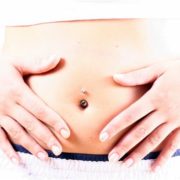




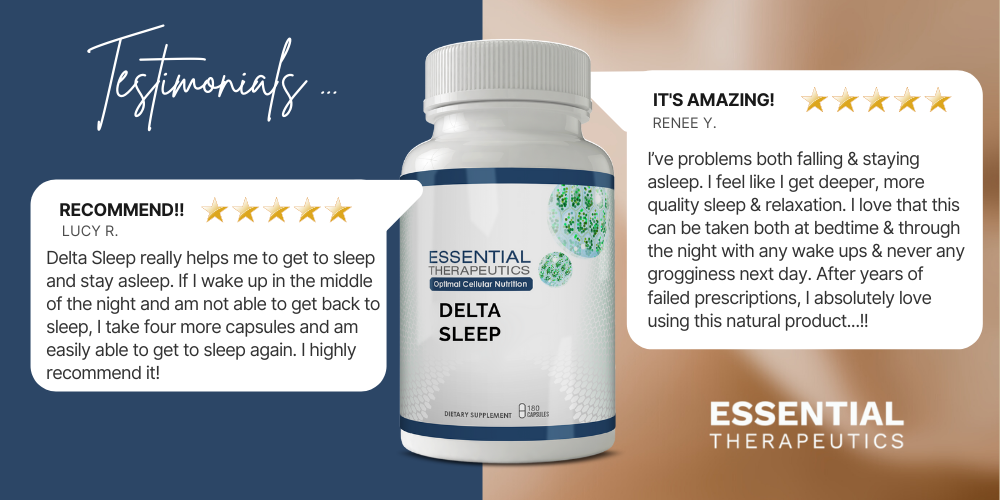


I suffer from many intestinal problems and want to give up the three pres. for this problem. Why have two different g astrologist not addressed this. Have continuous sinus problems. I know this will help. thank you Frances
am confused as to treatment between products at health store and your products? which ones? Will your products be sufficient and again which ones. I have limited income and no transportation.
I start 90% of my fibro or CFS patients on the Jump Start Package products. These special products were developed by me based on 14 years of specializing in fibro and CFS. The ingredients/supplements are specific for the needs of those with these illnesses. My goal was to combine the best, most effective products to make the biggest impact in a patients symptoms. They are high dose, pharmaceutical grade supplements, many not found at health food stores. You can learn more at the following link
https://essentialtherastore.com/collections/frontpage/products/fibromyalgia-cfs-jumpstart-package
or http://www.treatingandbeating.com or call the clinic 205-879-2383
This is all very confusing! Where are you located? I am in Michigan, do you have any Doctors that work with you in this area? Thank you for your time.
My clinic is in Birmingham AL. 90% of my practice is phone consults with patients throughout N. America. 205-879-2383
I just want to thank you for all your hard work, research, and time well spent in helping others. It is very much appreciated!